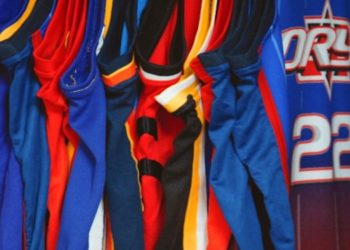Liverpool Football Club is one of the most iconic teams in world football, and much of its history has been defined by the players who arrived through the transfer market. Some signings transformed the club’s destiny, while others became symbolic of eras of dominance or decline. The following stories highlight how Liverpool transfer decisions across the decades changed the course of the club forever.
Kevin Keegan’s Arrival in 1971
When Liverpool signed Kevin Keegan from Scunthorpe United in 1971 for a modest fee, few expected him to become the spark of a new dynasty. His energy, skill, and goalscoring ability quickly elevated Bill Shankly’s side into genuine contenders at home and abroad. Keegan’s arrival was not just about goals but also about bringing flair and determination that symbolized a new generation of Liverpool football.
Keegan’s Departure and Kenny Dalglish’s Arrival
While losing Keegan to Hamburg in 1977 could have been a disaster, Liverpool responded in sensational fashion by signing Kenny Dalglish from Celtic. Dalglish didn’t just fill the void; he elevated the club to new heights. His intelligence, creativity, and finishing ability turned Liverpool into a powerhouse across Europe, with Dalglish becoming a player-manager later and a symbol of Liverpool’s winning culture.
Graeme Souness and Midfield Dominance
In 1978, Liverpool secured Graeme Souness from Middlesbrough, a signing that gave the team unmatched steel and leadership in midfield. Souness was not just a tough tackler but also a superb passer who could dictate games. With him orchestrating the middle of the park, Liverpool dominated both domestically and in Europe, solidifying their reputation as the team everyone feared.
Ian Rush and the Striker’s Instinct
When Ian Rush joined Liverpool from Chester in 1980, he was a raw talent. But under the club’s guidance, he blossomed into one of the most lethal strikers in world football. His pace, finishing, and partnership with Dalglish produced countless goals and silverware. Rush’s presence kept Liverpool at the top and made him one of the most important transfers in the club’s history.
John Barnes and a New Style of Play
The signing of John Barnes in 1987 from Watford transformed Liverpool’s attack with his pace, flair, and creativity. Barnes brought a new level of dynamism and unpredictability to the team, dazzling fans and opponents alike. His performances defined Liverpool’s attacking philosophy of the late 1980s, making him one of the most exciting wingers to ever play in England.
The Decline After Barnes’ Era
As the 1990s arrived, Barnes’ brilliance could not mask the cracks in Liverpool’s decline. Poor transfer decisions and missed opportunities in the market left the club trailing Manchester United and Arsenal. The wrong signings during this period highlighted how crucial smart transfer strategy was, as rivals used the market to build dominance while Liverpool struggled to keep up.
Michael Owen and a Teenage Sensation
When Michael Owen burst onto the scene in the late 1990s, it felt like Liverpool had unearthed the future of English football. A product of the academy, Owen’s rise was meteoric, but Liverpool’s decision to build around him was influenced by the transfers they failed to make during this period. His pace and finishing gave hope, but the lack of supporting signings meant Liverpool remained inconsistent.
Steven Gerrard and Loyalty Tested
Steven Gerrard never actually left Liverpool, but his story is inseparable from the transfer sagas that surrounded him. Chelsea’s attempts to lure him in the mid-2000s nearly succeeded, and had he left, Liverpool’s history could have looked very different. His decision to stay cemented his legacy as a one-club legend and proved how transfer decisions don’t always involve arrivals or departures but also the loyalty of key players.
The Signing of Fernando Torres
In 2007, Liverpool captured the imagination of fans by signing Fernando Torres from Atlético Madrid. Torres immediately became a cult hero, scoring goals with ease and terrorizing defenders across Europe. His arrival reinvigorated the club, even though his later departure to Chelsea was a bitter pill to swallow. Torres demonstrated how one signing could lift the mood and quality of an entire team.
Xabi Alonso and Midfield Elegance
Alongside Torres, Liverpool’s acquisition of Xabi Alonso from Real Sociedad in 2004 was a masterstroke. Alonso’s vision, passing range, and control of games made him one of the best midfielders in the world. His influence was critical in the 2005 Champions League triumph in Istanbul, a night that has gone down in football folklore. Alonso’s signing remains one of the best examples of smart transfer business by Liverpool.
Luis Suárez and the Chaos Factor
In 2011, Liverpool brought Luis Suárez to Anfield, and with him came moments of brilliance mixed with controversy. Suárez was unstoppable at his best, scoring outrageous goals and nearly carrying Liverpool to a Premier League title in 2014. Though his time was short, Suárez’s signing highlighted how Liverpool transfer decisions could bring world-class talent that elevated the club even when trophies slipped away.
The Turning Point of Philippe Coutinho
Liverpool’s capture of Philippe Coutinho in 2013 for a relatively small fee proved to be a bargain. His flair, dribbling, and creativity made him central to Liverpool’s style under Brendan Rodgers and later Jürgen Klopp. More importantly, his eventual sale to Barcelona for a record-breaking fee allowed Liverpool to reinvest in key players, a moment that changed the modern era of the club forever.
Virgil van Dijk and Defensive Transformation
Arguably the most important signing in modern Liverpool history was Virgil van Dijk in 2018. Before his arrival, Liverpool’s defense was often criticized as fragile. With van Dijk, everything changed. His leadership, aerial dominance, and composure transformed the backline, giving Liverpool the stability needed to compete with Europe’s elite once more. This was the foundation of their Champions League and Premier League triumphs.
Alisson Becker and the Goalkeeper Revolution
Following van Dijk, the signing of Alisson Becker in 2018 solved another long-standing weakness. Liverpool had struggled for years with unreliable goalkeepers, but Alisson brought world-class reflexes, composure, and distribution. His presence between the sticks made the difference in crucial matches, helping Liverpool achieve their European glory in 2019 and league triumph in 2020.
Mohamed Salah and Attacking Brilliance
Mohamed Salah’s arrival in 2017 was initially met with skepticism, but he quickly silenced all doubts by breaking records. His pace, finishing, and relentless goal-scoring turned him into one of the most feared forwards in the world. Salah’s signing not only gave Liverpool world-class firepower but also symbolized the club’s smart recruitment under Klopp’s era.
Sadio Mané and the Catalyst for Change
Before Salah, the signing of Sadio Mané in 2016 was the first major attacking move of Klopp’s rebuild. Mané’s energy, pressing, and ability to deliver in big games made him invaluable. He was the spark that ignited Liverpool’s front line and set the tone for the dynamic attack that would dominate Europe in the years to come.
Roberto Firmino’s Unique Role
Signed in 2015, Roberto Firmino may not have been the flashiest signing, but his role was essential. As the false nine, Firmino linked play, pressed tirelessly, and created space for Mané and Salah. His unselfish style became the heartbeat of Liverpool’s attack, proving how important tactical fit is in the transfer market.
The Klopp Era Defined by Transfers
Jürgen Klopp’s success at Liverpool is built on intelligent transfer strategies. Rather than splashing money recklessly, Klopp and the club focused on signing players who fit the system perfectly. The arrivals of Salah, Mané, Firmino, van Dijk, and Alisson all combined to create a squad that could challenge for every major honor, showing how the right Liverpool transfer strategy can define an era.
Transfers That Changed the Future
From Keegan to Dalglish, from Gerrard to Salah, every major Liverpool era has been shaped by signings, departures, and loyalty tests. The transfer market has always been a reflection of Liverpool’s ambitions and identity. Each signing tells a story of risk, vision, and transformation that changed the club forever, ensuring Liverpool remains one of the most influential teams in football history.













































































